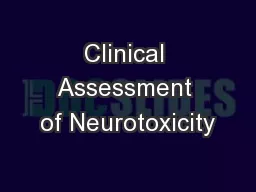PPT-Case Discussion: Second
Author : celsa-spraggs | Published Date : 2018-09-18
Opinion 55 yearold woman with recurrent ovarian cancer Underwent an optimal cytoreductive surgery and placement of an intraperitoneal catheter Disease progressed
Presentation Embed Code
Download Presentation
Download Presentation The PPT/PDF document "Case Discussion: Second" is the property of its rightful owner. Permission is granted to download and print the materials on this website for personal, non-commercial use only, and to display it on your personal computer provided you do not modify the materials and that you retain all copyright notices contained in the materials. By downloading content from our website, you accept the terms of this agreement.
Case Discussion: Second: Transcript
Download Rules Of Document
"Case Discussion: Second"The content belongs to its owner. You may download and print it for personal use, without modification, and keep all copyright notices. By downloading, you agree to these terms.
Related Documents














